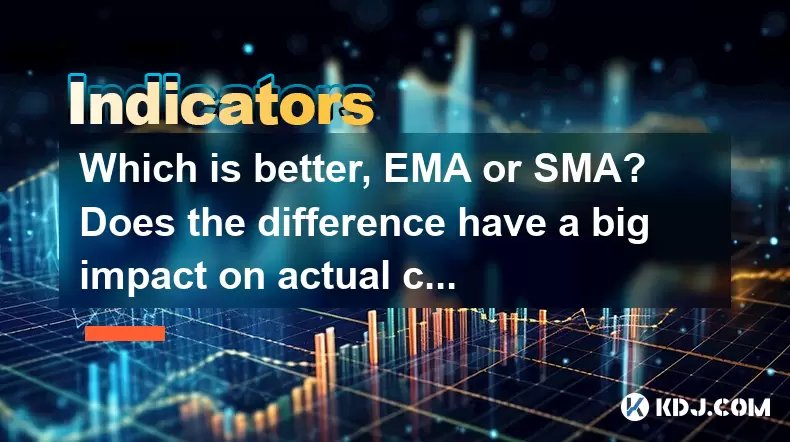-
 Bitcoin
Bitcoin $117800
0.49% -
 Ethereum
Ethereum $4432
0.55% -
 XRP
XRP $3.106
1.07% -
 Tether USDt
Tether USDt $1.001
0.01% -
 BNB
BNB $835.8
1.74% -
 Solana
Solana $189.1
2.72% -
 USDC
USDC $0.9999
-0.01% -
 Dogecoin
Dogecoin $0.2302
3.65% -
 TRON
TRON $0.3485
-0.69% -
 Cardano
Cardano $0.9212
-0.91% -
 Hyperliquid
Hyperliquid $46.97
1.45% -
 Chainlink
Chainlink $22.77
5.61% -
 Stellar
Stellar $0.4284
0.82% -
 Sui
Sui $3.766
2.82% -
 Bitcoin Cash
Bitcoin Cash $583.5
-0.82% -
 Ethena USDe
Ethena USDe $1.001
0.03% -
 Hedera
Hedera $0.2512
2.78% -
 Avalanche
Avalanche $24.18
2.27% -
 Litecoin
Litecoin $120.2
2.10% -
 Toncoin
Toncoin $3.450
1.96% -
 UNUS SED LEO
UNUS SED LEO $9.412
-0.92% -
 Shiba Inu
Shiba Inu $0.00001298
2.35% -
 Uniswap
Uniswap $10.99
3.75% -
 Polkadot
Polkadot $3.962
3.09% -
 Dai
Dai $1.000
0.00% -
 Bitget Token
Bitget Token $4.643
1.38% -
 Cronos
Cronos $0.1511
-0.08% -
 Ethena
Ethena $0.7246
3.18% -
 Monero
Monero $254.9
7.90% -
 Pepe
Pepe $0.00001100
3.32%
Which is better, EMA or SMA? Does the difference have a big impact on actual combat?
In crypto trading, choosing between SMA and EMA impacts outcomes; EMA's sensitivity suits short-term trades, while SMA's smoother signals aid long-term trend analysis.
May 22, 2025 at 11:36 am

When it comes to technical analysis in the cryptocurrency market, moving averages play a crucial role in identifying trends and potential entry or exit points. Two of the most popular types of moving averages are the Simple Moving Average (SMA) and the Exponential Moving Average (EMA). Traders often debate which one is better and whether the difference between them significantly impacts trading performance. Let's delve into these moving averages, their differences, and their practical implications in the crypto trading world.
Understanding Simple Moving Average (SMA)
The Simple Moving Average (SMA) is calculated by taking the arithmetic mean of a given set of prices over a specific period. For example, a 10-day SMA would sum up the closing prices of the last 10 days and divide by 10. This type of moving average gives equal weight to all data points within the chosen period.
- Calculation of SMA: If you want to calculate a 10-day SMA for a cryptocurrency, you would:
- Collect the closing prices of the last 10 days.
- Sum these prices.
- Divide the sum by 10.
SMA is straightforward and easy to understand, making it a popular choice among beginners. It is also less sensitive to recent price changes, which can be beneficial in smoothing out short-term fluctuations and providing a clearer picture of the long-term trend.
Understanding Exponential Moving Average (EMA)
The Exponential Moving Average (EMA) is a type of moving average that places more weight on recent prices. This makes the EMA more responsive to new information. The calculation of EMA involves using a multiplier that emphasizes the most recent data points.
- Calculation of EMA: To calculate a 10-day EMA, you would:
- Determine the multiplier, which is typically set as 2/(n+1), where n is the number of periods. For a 10-day EMA, the multiplier would be 2/(10+1) = 0.1818.
- Calculate the SMA for the initial period (in this case, the 10-day SMA).
- Use the formula: EMA = (Closing price - EMA(previous day)) x multiplier + EMA(previous day).
EMA's sensitivity to recent price changes makes it a favored tool among traders who need to react quickly to market movements. It can help identify trends earlier than SMA, which can be crucial in fast-moving markets like cryptocurrencies.
Key Differences Between SMA and EMA
The primary difference between SMA and EMA lies in their sensitivity to price changes. SMA gives equal weight to all data points, resulting in a smoother line that reacts more slowly to price changes. On the other hand, EMA places more emphasis on recent data, making it more responsive to price fluctuations.
- Sensitivity: EMA is more sensitive to recent price movements, making it ideal for short-term trading. SMA, being less responsive, is often used for longer-term trend analysis.
- Lag: SMA tends to lag behind price movements more than EMA. This lag can be a disadvantage in volatile markets but can provide a clearer view of long-term trends.
- Calculation Complexity: SMA is simpler to calculate and understand, while EMA involves a more complex formula that places varying weights on data points.
Impact on Actual Combat: Trading with SMA and EMA
The choice between SMA and EMA can indeed have a significant impact on trading outcomes, especially in the volatile cryptocurrency market. Let's explore how these moving averages can be used in different trading scenarios.
Trend Identification: Both SMA and EMA can be used to identify trends. However, EMA's sensitivity to recent prices can help traders spot trends earlier. For instance, if the price of Bitcoin crosses above its 50-day EMA, it might signal a bullish trend sooner than a similar crossover with the 50-day SMA.
Entry and Exit Points: Traders often use moving averages to determine entry and exit points. An EMA crossover strategy, where a short-term EMA crosses above a longer-term EMA, can provide quicker signals for entering a trade. Conversely, an SMA crossover might provide more reliable signals for longer-term positions.
Volatility: In highly volatile markets, the EMA can be more beneficial due to its responsiveness. For example, during a sudden price surge in Ethereum, an EMA might provide a faster signal to enter the market, potentially capturing more of the upward movement.
Risk Management: The choice between SMA and EMA can also affect risk management strategies. EMA's sensitivity might lead to more frequent trading signals, increasing transaction costs and potential losses if not managed properly. SMA's smoother signals might result in fewer trades but could miss out on quick market movements.
Practical Examples in Cryptocurrency Trading
To illustrate the impact of using SMA versus EMA in actual trading scenarios, let's consider a few practical examples:
Example 1: Bitcoin Trend Following: Suppose you're tracking Bitcoin's price using a 50-day moving average. If you use an SMA, you might see a bullish signal when the price crosses above the 50-day SMA. However, if you use an EMA, you might get this signal earlier, allowing you to enter the trade at a more favorable price.
Example 2: Ethereum Short-Term Trading: For short-term trading in Ethereum, using a 10-day EMA could be more effective than a 10-day SMA. The EMA would react more quickly to Ethereum's price movements, providing timely signals for entering and exiting trades.
Example 3: Altcoin Volatility: When trading altcoins like Cardano or Solana, which can be highly volatile, an EMA might help you capitalize on short-term price spikes more effectively than an SMA. The EMA's responsiveness could allow you to enter and exit trades at optimal times.
Choosing Between SMA and EMA
The choice between SMA and EMA ultimately depends on your trading style, risk tolerance, and the specific market conditions you're trading in. Here are some considerations to help you decide:
Trading Style: If you're a short-term trader looking to capitalize on quick market movements, the EMA's sensitivity to recent prices might be more suitable. For longer-term trend analysis, the SMA's smoother signals could be more beneficial.
Market Conditions: In highly volatile markets, the EMA can provide more timely signals. In more stable markets, the SMA might offer a clearer view of long-term trends without the noise of short-term fluctuations.
Risk Management: Consider how the choice between SMA and EMA impacts your risk management strategy. More frequent signals from an EMA might increase transaction costs and potential losses, while fewer signals from an SMA could result in missed opportunities.
Frequently Asked Questions
Q1: Can I use both SMA and EMA together in my trading strategy?
Yes, many traders use both SMA and EMA in combination to gain a more comprehensive view of the market. For example, you might use a short-term EMA to identify quick entry and exit points and a longer-term SMA to confirm the overall trend direction.
Q2: How do I choose the right period for SMA or EMA?
The choice of period depends on your trading goals. Short-term traders might use shorter periods like 10 or 20 days, while long-term investors might prefer 50 or 200 days. Experiment with different periods to see which works best for your strategy and the specific cryptocurrency you're trading.
Q3: Are there other types of moving averages I should consider?
Yes, besides SMA and EMA, there are other types of moving averages, such as the Weighted Moving Average (WMA) and the Smoothed Moving Average (SMMA). Each has its own calculation method and can be useful in different trading scenarios. WMA, for instance, gives more weight to recent prices like EMA but uses a different weighting method.
Q4: How do moving averages help in managing risk?
Moving averages can help manage risk by providing clear signals for entry and exit points. By setting stop-loss orders based on these signals, traders can limit potential losses. Additionally, using moving averages to confirm trends can help traders avoid entering trades against the prevailing market direction, thus reducing risk.
Disclaimer:info@kdj.com
The information provided is not trading advice. kdj.com does not assume any responsibility for any investments made based on the information provided in this article. Cryptocurrencies are highly volatile and it is highly recommended that you invest with caution after thorough research!
If you believe that the content used on this website infringes your copyright, please contact us immediately (info@kdj.com) and we will delete it promptly.
- Kazakhstan's Crypto Leap: Bitcoin ETF and Central Asia's Digital Finance Future
- 2025-08-13 12:45:19
- BlockDAG Presale Blazes Past $371M: Fundraising Frenzy Fuels Crypto Sensation
- 2025-08-13 13:05:21
- Meme Coins: Chasing the 2025 Surge – Which Will Moonshot?
- 2025-08-13 10:25:23
- Bitcoin's Wild Ride: Rally, Pullback, and What's Next
- 2025-08-13 10:25:23
- Bitcoin, Bitmax, and Institutional Demand: A New Era of Crypto Investment
- 2025-08-13 10:45:12
- Solana, ROAM, and Airdrops: What's the Buzz in 2025?
- 2025-08-13 11:35:13
Related knowledge

What does it mean when the +DI and -DI cross frequently in the DMI indicator but the ADX is flattening?
Aug 11,2025 at 03:15am
Understanding the DMI Indicator ComponentsThe Directional Movement Index (DMI) is a technical analysis tool composed of three lines: the +DI (Positive...

What does the sudden appearance of a "dark cloud cover" candlestick pattern during an uptrend indicate?
Aug 13,2025 at 11:35am
Understanding the 'Dark Cloud Cover' Candlestick PatternThe dark cloud cover is a bearish reversal pattern in technical analysis that typically appear...

What does it mean when the moving average, MACD, and RSI all send buy signals simultaneously?
Aug 11,2025 at 01:42pm
Understanding the Convergence of Technical IndicatorsWhen the moving average, MACD, and RSI all generate buy signals at the same time, traders interpr...

What does it mean when both the KDJ indicator and the RSI show overbought signals simultaneously?
Aug 13,2025 at 11:35am
Understanding the KDJ Indicator in Cryptocurrency TradingThe KDJ indicator is a momentum oscillator derived from the Stochastic Oscillator, widely use...

What does it mean when the price is trading above the SAR indicator but the red dots are densely packed?
Aug 09,2025 at 11:49pm
Understanding the SAR Indicator and Its Visual SignalsThe SAR (Parabolic Stop and Reverse) indicator is a technical analysis tool used primarily to de...

What does it mean when the candlestick chart forms a "Morning Star" but trading volume is sluggish?
Aug 12,2025 at 06:28pm
Understanding the Morning Star Candlestick PatternThe Morning Star is a three-candle bullish reversal pattern commonly observed in cryptocurrency pric...

What does it mean when the +DI and -DI cross frequently in the DMI indicator but the ADX is flattening?
Aug 11,2025 at 03:15am
Understanding the DMI Indicator ComponentsThe Directional Movement Index (DMI) is a technical analysis tool composed of three lines: the +DI (Positive...

What does the sudden appearance of a "dark cloud cover" candlestick pattern during an uptrend indicate?
Aug 13,2025 at 11:35am
Understanding the 'Dark Cloud Cover' Candlestick PatternThe dark cloud cover is a bearish reversal pattern in technical analysis that typically appear...

What does it mean when the moving average, MACD, and RSI all send buy signals simultaneously?
Aug 11,2025 at 01:42pm
Understanding the Convergence of Technical IndicatorsWhen the moving average, MACD, and RSI all generate buy signals at the same time, traders interpr...

What does it mean when both the KDJ indicator and the RSI show overbought signals simultaneously?
Aug 13,2025 at 11:35am
Understanding the KDJ Indicator in Cryptocurrency TradingThe KDJ indicator is a momentum oscillator derived from the Stochastic Oscillator, widely use...

What does it mean when the price is trading above the SAR indicator but the red dots are densely packed?
Aug 09,2025 at 11:49pm
Understanding the SAR Indicator and Its Visual SignalsThe SAR (Parabolic Stop and Reverse) indicator is a technical analysis tool used primarily to de...

What does it mean when the candlestick chart forms a "Morning Star" but trading volume is sluggish?
Aug 12,2025 at 06:28pm
Understanding the Morning Star Candlestick PatternThe Morning Star is a three-candle bullish reversal pattern commonly observed in cryptocurrency pric...
See all articles

























































































